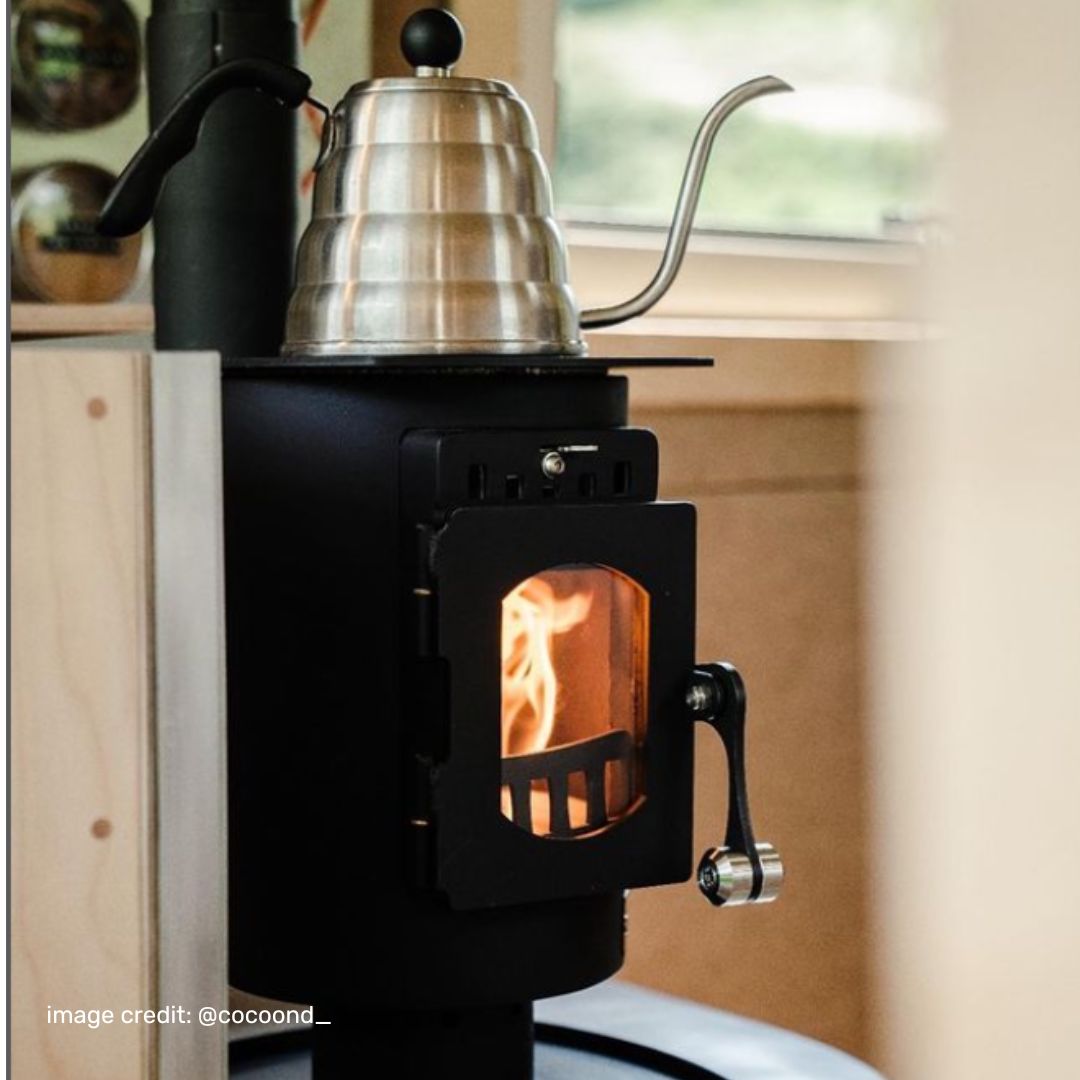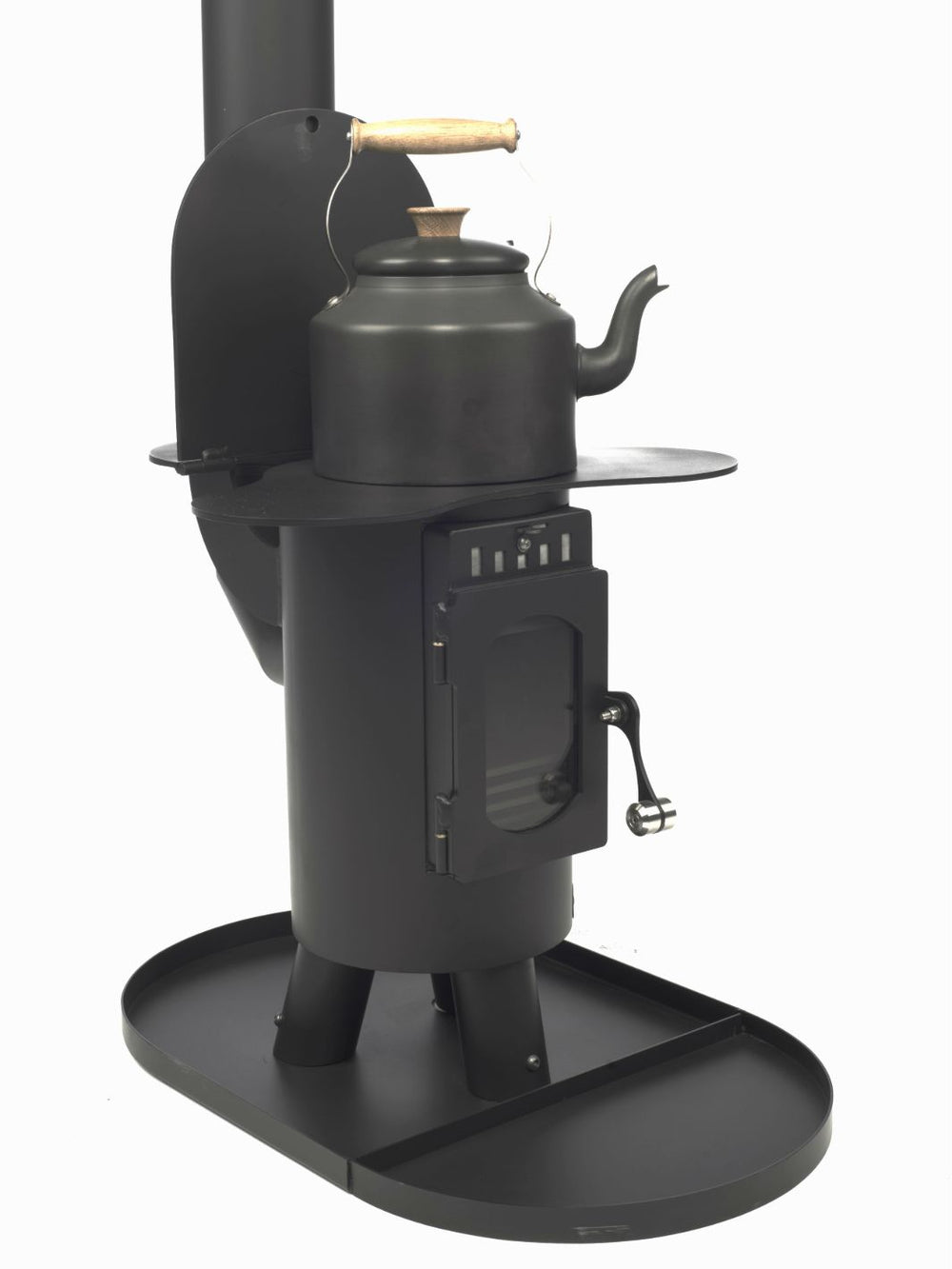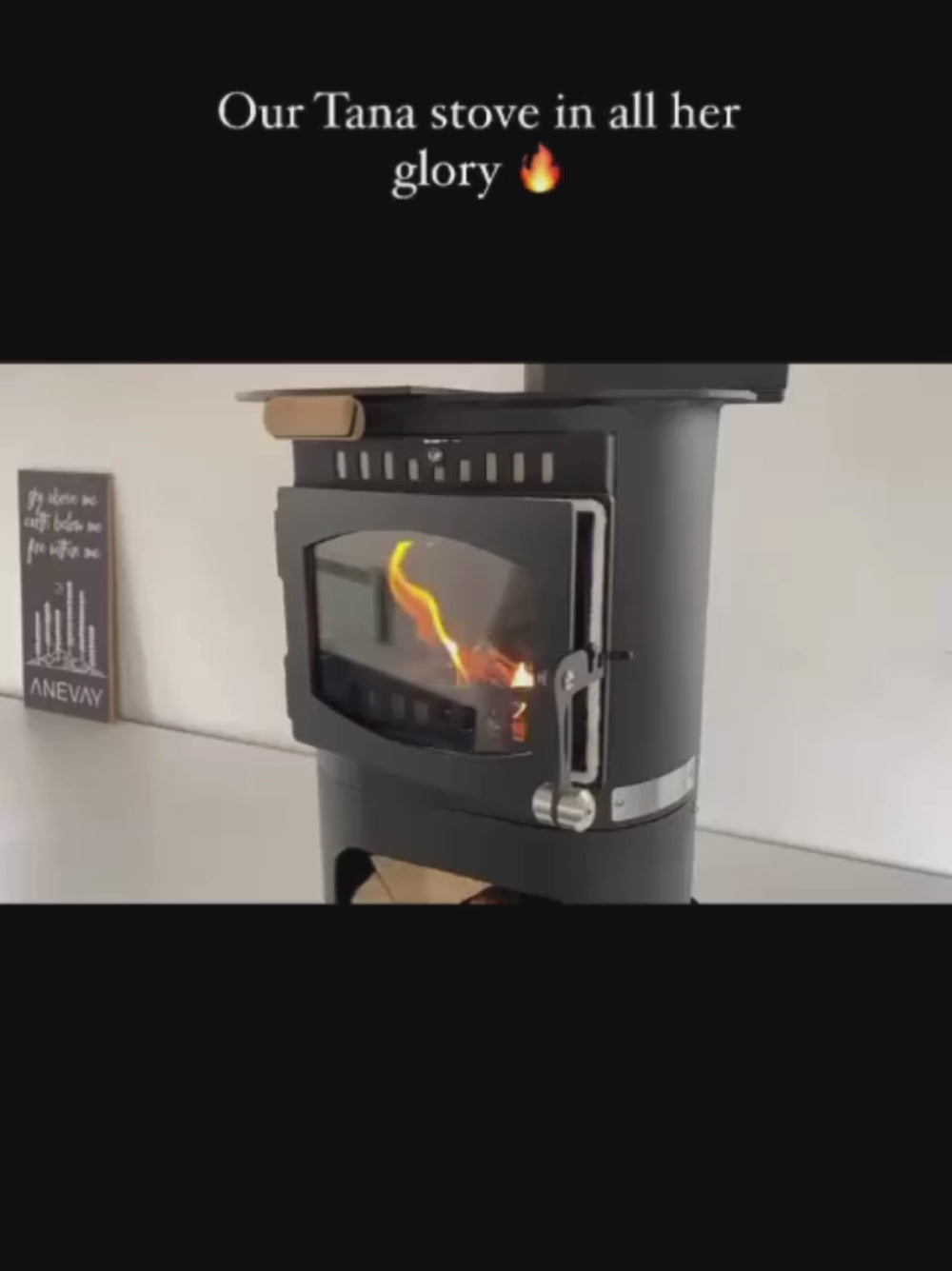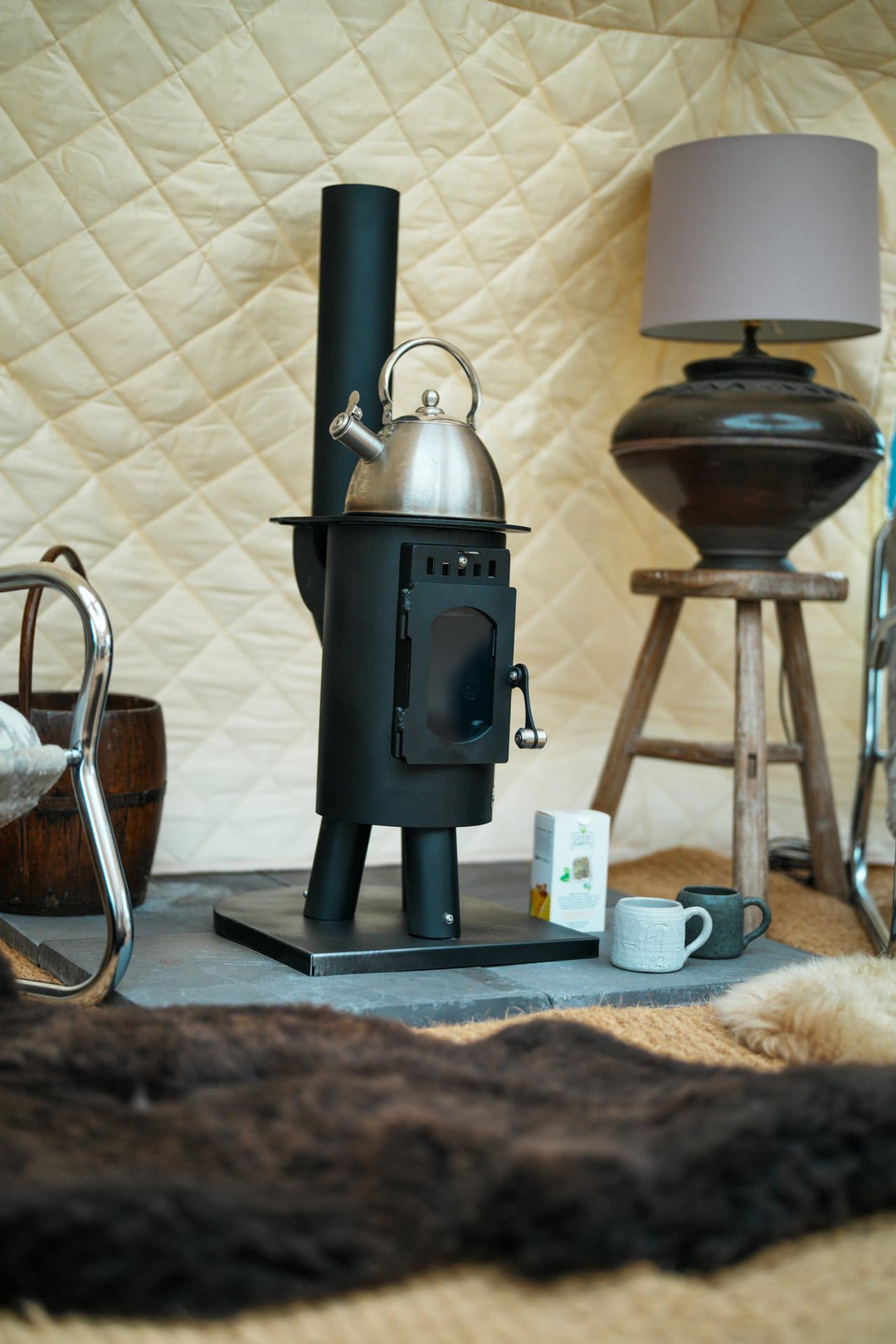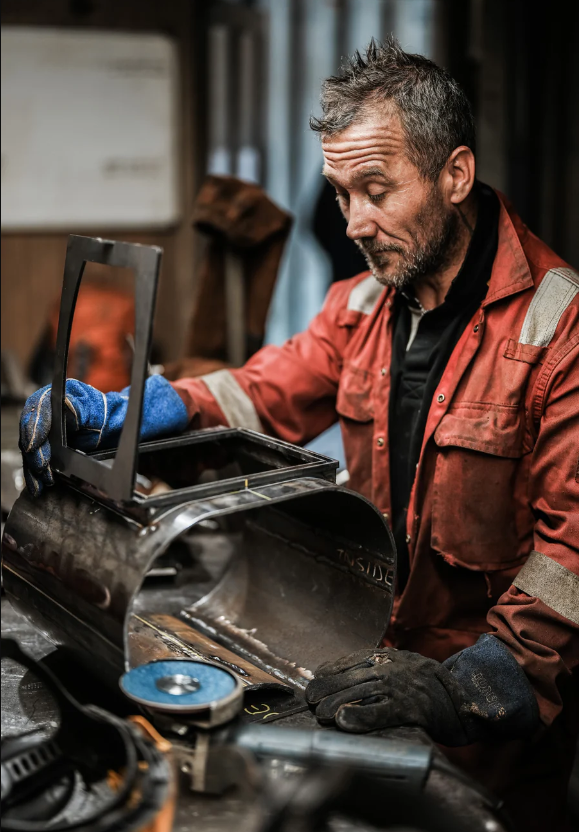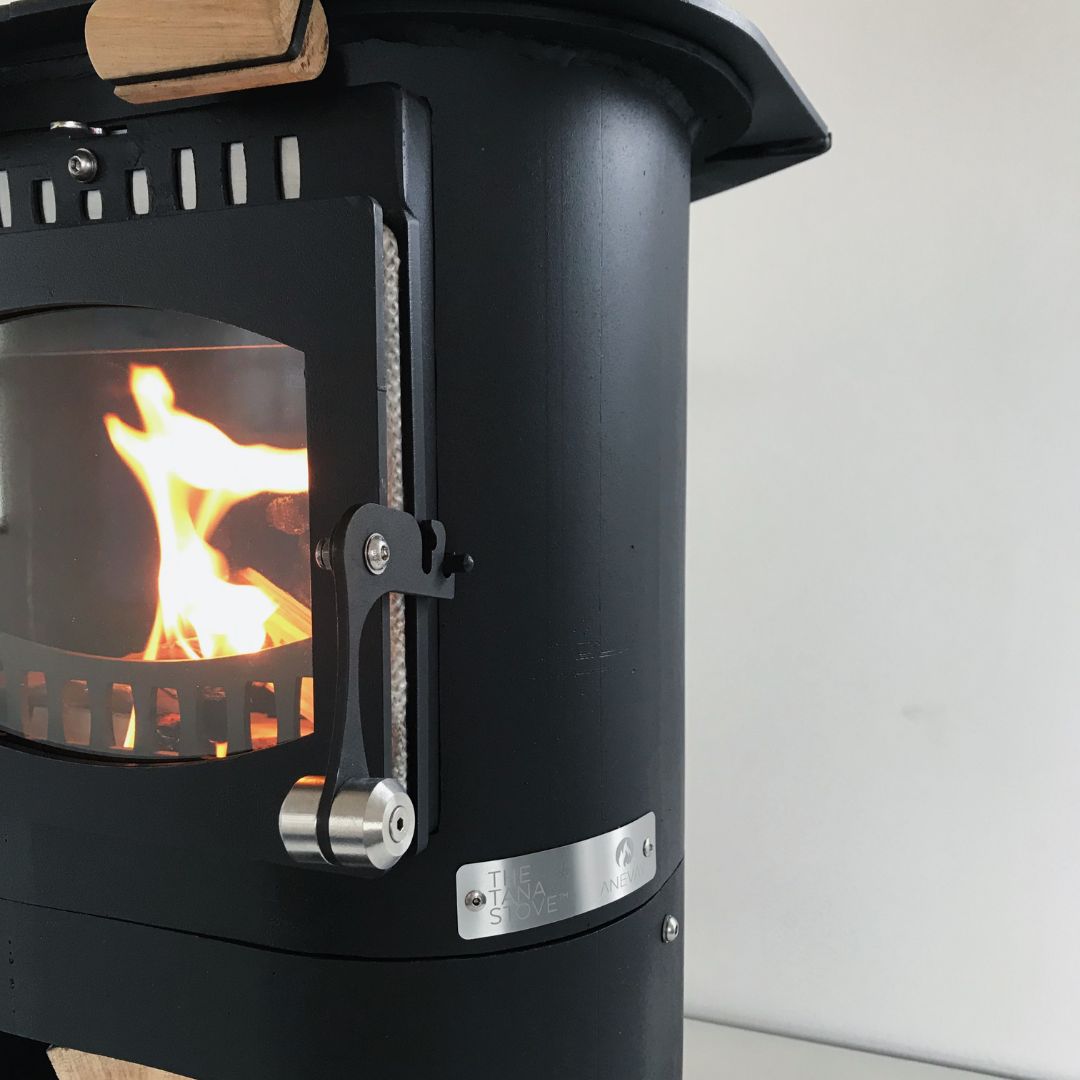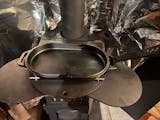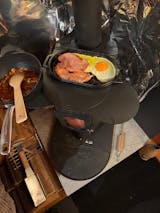We are sometimes asked why we don't offer a version of the Frontier Stove or Frontier Plus made from stainless steel. Stainless is a great material: it's stain and rust-resistant and looks sleek. The answer is simple: while it may well look pretty in a photo, it doesn't work very well as a stove. In this blog post, we get technical about the properties of stainless steel and go in-depth about why we don't make stainless stoves.

The purpose of any type of stove is to enable and control the efficient transfer of energy stored in unburned fuel into heat directed at the desired target. The target may be you, the bottom of a kettle, the space inside a tent or perhaps all three. A good stove will use the best design and the materials with the best properties to achieve whatever the desired purpose or aim is. The correct choices will ultimately determine the efficiency of the stove and its success as a heat source.
All metals have different properties of weight, strength, stiffness, finish etc, but they also have differing thermal properties. These include heat conductivity, expansion rate, emissivity, reflectivity, and melting point. It is these invisible factors that are of vital importance when designing a stove.
So why can't we use stainless steel to construct the Frontier Stove? Most of the warmth you feel while sitting around a fire or stove outdoors is radiant heat - heat transmitted outwards via infrared radiation - and shiny stainless steel is a very bad emitter of radiant heat. It is also a relatively poor conductor, which means that areas of the stove in close proximity to burning fuel will reach very high temperatures while other parts won't, rather than distributing the heat evenly across the whole stove. As it is unable to emit this excess heat away or conduct it to other areas and because stainless also has a high thermal expansion rate (meaning the metal expands when hot), the result is likely to be metal distortion or warping caused by the unequal expansion. If the cooking surface warps, the good contact with the flat base of a cooking pot essential for effective heat transfer by conduction is lost. Quality stainless saucepans often sandwich a disc of aluminium (a very good conductor) into the pan's base to help spread heat evenly for cooking and to prevent distortion.

When the heat produced inside a stove cannot leave the stove easily either by radiant emission or conduction, the majority of the heat must therefore be expelled by convection (the upward flow of hot gases) and leaves the stove inside the chimney to be wasted in the air above. The exterior of the stove will also heat some of the air in close contact with it and this will rise by convection to warm an enclosed space such as a tent or be lost to the atmosphere if outdoors. In a tent, this means that the top of your tent will get warm but the lower parts (usually where you're sitting or sleeping) will stay chilly.
In short, a stainless steel Frontier Stove or other stove of similar design would be most inefficient and disappointing as a heat source.
We design all our products to be robust and hardwearing, to stand up to the test of the most extreme adventures you can throw at them, and a stove that warps doesn't make the cut. There is nothing wrong with stainless as a material - it works great for our ever-popular stainless steel water heaters - it's just not suitable for constructing a wood stove.
There's a common misconception that a stainless stove is maintenance-free. A scientist would describe the interior of any used stove as a hostile environment for metals: the large changes in temperature combined with ash inside (alkaline) and soot/tar in the chimney (mildly acidic) will damage the thin chromium oxide layer if allowed to be wet or damp for any length of time (it's the extra chromium content in the steel that makes it stainless steel). All stoves, especially outdoor stoves, should be cleaned and stored dry as soon as possible after use.
Finding the right material. A crucial part of the stove design process is choosing the right material for the job. We've designed, built and tested many, many different stoves over the years (early followers of Anevay might remember the Nomad and Fortress stoves - just a couple of the designs we've tried over the years), and we know what works and what doesn't for each stove. There are lots of things to consider when choosing material: portability, durability, heat radiation, even aesthetics.

Portable rocket stoves and wood gas stoves. When it comes to these efficient little cooking stoves (like our Horizon Stove) modern designs are almost always built using stainless steel burn chambers. The very characteristics that make stainless a bad choice for a wood stove make it ideal for rocket and mini wood gas stoves. The short stainless steel vertical “chimney” keeps the heat in rather than radiating it outwards, promoting a very efficient burn and directing the hot gases directly upwards to the cooking pot. Because the burn chamber/chimney is fairly small and close to the heat, most of it is at a similar high temperature so uneven expansion is not an issue.
Portable barbecues and fire pits. These are usually built with a stainless or carbon steel body, depending on design and predicted usage. An open topped box or ½ sphere with the cooking grill directly above the heat source means the type of metal used in the casing is usually less important than other design features for performance and efficiency.
Portable wood stoves with flue (like the Frontier and Frontier Plus) Carbon steel (mild steel) is the metal of choice here: not only it is lightweight and strong but it also has excellent heat transfer properties. It conducts heat well for cooking and is also very good at emitting radiant heat to the surrounding area (the matte black high temp paint used not only protects the metal but also further increases radiant heat emissions). The air in direct contact with the surface of the hot stove body and flue will also transfer some heat to enclosed spaces by convection.
Fixed position stove with flue (ie our Tana Stove, Morso and Aga type stoves). Carbon steel (mild steel) or cast iron. The same principles apply to these as to the portable stoves: both mild steel and cast iron conduct well for cooking and emit a good amount of radiant heat - although the lightweight properties of carbon steel are less important here. Cast iron relies on its mass to retain heat: it's slower to heat up and takes longer to lose its heat after the fire is extinguished. However it has its downsides: cast iron is brittle and must be thick to avoid cracking due to impacts. A rapid change in temperature can cause cracks and render the stove useless; these cracks can also appear over time as it expands and contracts with heat.
We choose carbon steel for our stoves as we find it more durable: it won't crack like cast iron and it heats up much quicker. From a design perspective, it allows us to make stoves with the distinct curves that make our stoves unique. We go for a thicker steel in our larger, made-in-Cornwall 'basecamp' stoves (the Shepherd, Traveller, Fintan and Tana) than in our portable range (the Horizon, Frontier and Frontier Plus), as portability is not so much of a concern - although carbon steel is still much lighter than cast iron.
As lots of our sturdier stoves are used to keep remote, off-grid spaces cosy (like tipis, bell tents and tiny homes), it's important that they can be moved easily, and lots of our customers pack up their Traveller or Shepherd Stove along with their bell tent and take them camping in the woods. We've even loaded two Travellers up in a boat for a very remote camping trip on a Cornish river, something that we probably wouldn't have managed had our stove been made of cast iron...
We hope we've answered your questions about why we don't make a stainless steel Frontier Stove, and maybe imparted a little manufacturing knowledge too. If there are other stove-related topics you'd like us to cover in-depth, feel free to leave your suggestions in the comments below - and don't forget to sign up below if you'd like to hear more from us.
